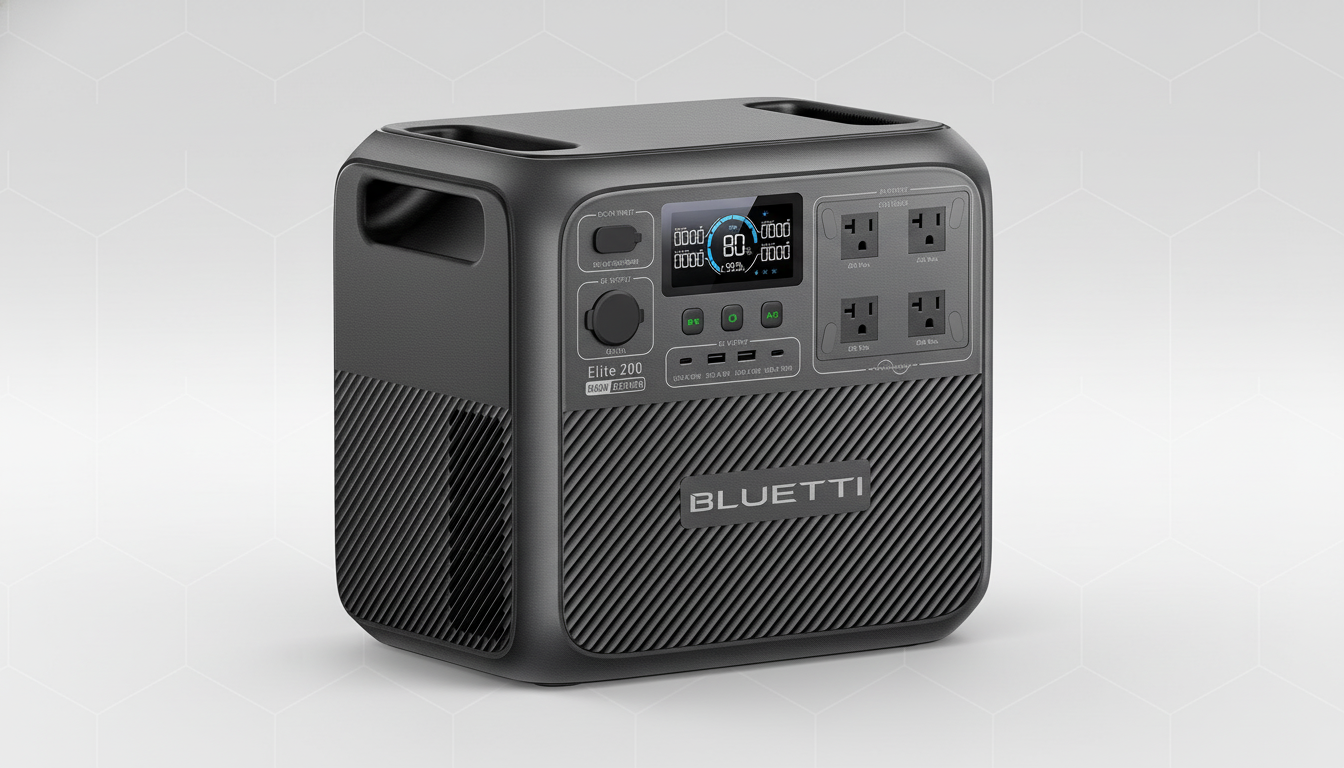Amazon is marking down the Bluetti Elite 200 V2 power station to a Lightning price of $799—54% from $1,699. That is the lowest-priced 2kWh-class unit I have ever seen, with the best-known brands typically knocking at the four-figure door.
At that price, buyer beware: Availability is limited by both time and available inventory, just like at every Lightning Deal. The new reality is punctuated by the recent U.S. Energy Information Administration report, in which power outages lasted more days and happened more often. Deals in this power-cell category can mean the difference between a good, well-packed camping bag and one ruined by poor preparation.

Key specifications and real-world runtime examples
The Elite 200 V2’s manufacturer-rated 2,073Wh battery enables a 5,200W peak output, which means it can handle essential startup peaks. Four AC outlets are located on the unit for your household devices, two USB-C 100W ports quickly charge your laptop or tablet, and a pair of 15-watt USB-A ports are designed for your old tech, along with a 120W 12V car socket for your cooler or inflator.
Real-world examples help put the numbers in context. A typical refrigerator drawing 120 to 150 watts could run for around ten to twelve hours on a charge when inverter losses and duty cycling are included. A 40W CPAP might run for a day. Even adding the power of routers, phones, LED lighting, and a laptop charger would hardly dent my 2kWh reserve, enabling me to keep up with my work and the light on during an outage.
For outdoor use, the Elite 200 V2 is similar in size to a small cooler, weighing just over 50 pounds, and portable for two-handed carries or short moves around camp.
Battery chemistry, cycle life, and independent findings
The Elite 200 V2 model uses lithium iron phosphate cells, which are favored for stability and long cycle life. It reports a multi-year lifespan—up to 17 years under typical usage patterns—before capacity meaningfully degrades, which means thousands of charge cycles.
Independent testing such as Consumer Reports and National Renewable Energy Laboratory findings have consistently pointed to the better retention of useful capacity of LFP compared to many nickel-based lithium chemistries, especially under frequent cycling.

How this limited-time price compares to rivals
At its listed $1,699 price, the Elite 200 V2 falls in line with other 2kWh competitors. The current $799 Lightning Deal significantly undercuts comparable-capacity models from brands like EcoFlow and Jackery, which typically sell for between $1,500 and $2,000, depending on bundles and time of year. If you’ve been waiting for a sub-$1,000 ticket into the 2kWh category, this is your chance.
However, value isn’t just watts per dollar. Peak output, port mix, charge speeds, warranty support, and other factors all contribute. Bluetti’s product stack has attracted a loyal true following of RV owners and overlanders due to its robust inverters, wide port coverage, and LFP longevity—all of which are essential in TCO considerations.
From camping to overlanding, a 2kWh station will silently power your induction cooktop, electric cooler, camera gear, and lighting, with no gasoline generator’s fumes or noise constraints, which restrict their use in many campgrounds. Tailgaters may run their speakers and grills, and vanlifers can power their daily needs without running their primary engine. It’s a practical lifebuoy during grid interruptions at home: keep your refrigerator cold, your modem running, and your phones recharging through the night.
As reported by the EIA, outages are inching up in average duration, prompting more households to put together a multi-layered plan: battery stations for lights-out and avoid dangerous portable indoor usage, plus solar or generator support where possible for multi-day events.
Buying advice and best practices for Lightning Deals
- Lightning Deals expire when either the countdown runs out or the allocation sells out.
- Before checkout, double-check the seller, scroll through recent buyer feedback, and confirm return and warranty terms.
- To run appliances with high startup surges, such as power tools and kitchen devices, leave headroom between their peak draw and the station’s surge rating.
- For longevity, store the battery at around 20% to 80% charge when it’s not in use and keep it in a cool, dry place—two practices echoed by battery researchers and manufacturers.
In short, a reputable 2kWh LiFePO4 power station for $799 is rare. If a portable backup has been on your list this season, with storm season, travel, or workshop flexibility in your near future, this is one of those limited-time price reductions that’s difficult to overlook.

